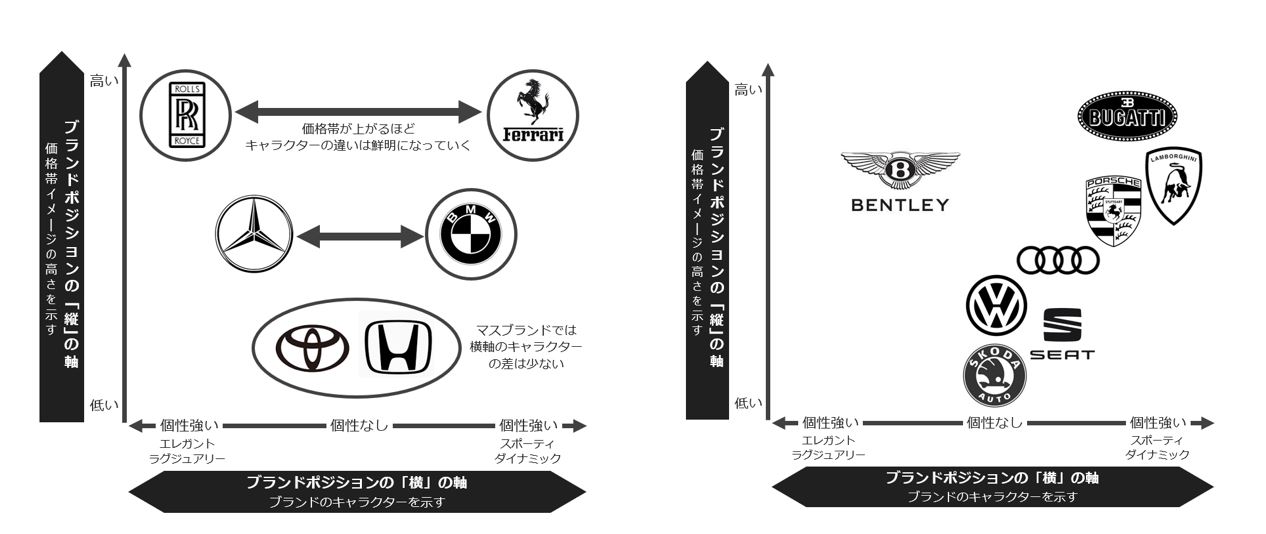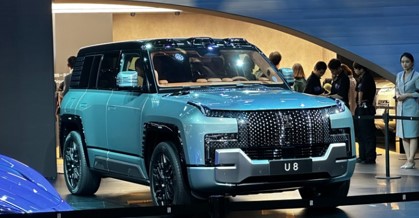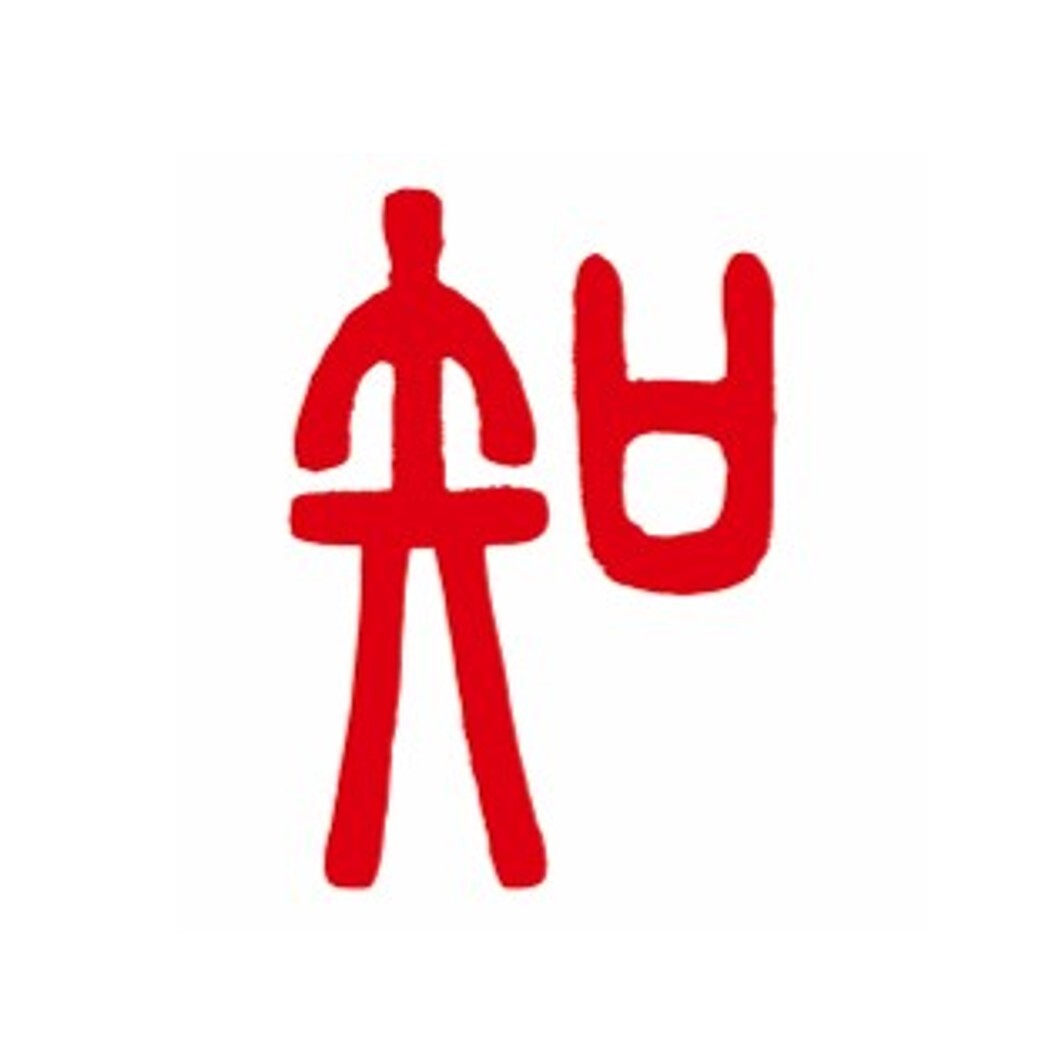[China] A discussion of Chinese electric vehicle (BEV) manufacturers' luxury lines
- Release date: Jan 12, 2024
- 4281 Views
Introduction.
A "luxury item" that everyone admires. Even his wife, who is not an expert on cars, is in a good mood when he drives a Mercedes Benz for some reason. Luxury goods have more emotional value than functional value and satisfy the "heart" of the consumer. When it comes to luxury brands in the automobile industry, it is almost exclusively Western, and probably not a single person recalls a Chinese manufacturer.
However, that was in the era of gasoline-powered cars, and now that we are entering the "CASE" era, the once-in-a-century revolution in the automotive industry, the advent of electric vehicles (BEVs) is about to revolutionize the pecking order. Even the absolute champions of the past are at risk of being eliminated if they make the wrong move in this era. Conversely, this could be seen as a chance for previously unknown manufacturers to achieve rapid growth and make a name for themselves. Against this backdrop, BEV makers are popping up in China like bamboo shoots after rain, and among them there are a number of makers that have launched a luxury line.
In this article, we will discuss why Chinese BEV makers are trying to launch a luxury line, what elements are necessary for a luxury car, and how to build a luxury brand.
Why launch an upscale line?
There are two reasons why Chinese BEV makers are launching a luxury line.
(1) Luxury cars are highly profitable.
Let us take the example of the Volkswagen Group, which has many brands. In addition to Volkswagen, the group owns premium brands such as Audi, Porsche, Bentley, Lamborghini, and Bugatti. In terms of sales volume, Volkswagen-brand cars account for 58% of the total, which is by far the largest share. However, a look at earnings reveals a completely different world. For example, Porsche, which accounts for only 4% of the total sales volume, generates a whopping 27% of the group's total revenue. The Cayenne, Porsche's flagship SUV, is actually a sibling of Volkswagen's Touareg, sharing a common platform (the car's foundation or basic structure). Despite this, the Cayenne is sold at a price that "carries the cost of the Porsche brand" and has enjoyed great popularity among China's emerging affluent class, contributing significantly to earnings.

What are the necessary elements for a luxury car?
First, let me ask readers flatly: What brands come to mind when you think of "luxury brands," and not just cars?
Mercedes Benz, BMW, and Audi for cars, Rolex and Omega for watches, and Louis Vuitton and Chanel for bags. I am sure that you can think of similar brands. I have extracted the common elements of these brands from the viewpoint of a Chinese citizen.
(1) Of course, the product must be expensive (as in the Chinese saying "不买最好的,只买最贵的" (expensive is more expensive than good), giving it an image of luxury).
(2) The country of production must be a developed country (basically, Western countries. Luxury bags from India? Luxury watches from North Korea? It doesn't really ring a bell. Furthermore, the country of origin among developed countries exerts a unique "divine power" for the Chinese, e.g., watches = Switzerland, automobiles = Germany, cosmetics = France, and so on. In addition, Chinese consumers in their 30s and older, the main target group for luxury goods, are still distrustful of domestic products and superstitious about imports, so being a developed country/country of origin is an important factor that leads to luxury.)
(3) Rarity (brands that can be seen everywhere are called "撞车" in Chinese, and are considered to be in the category of mass brands).
(4) Strong individuality (Mass brands have little individuality, while the higher you go to luxury brands, the stronger the individuality (see figure below)).

Left: Brand Position of Automobile Manufacturers
Right: Brand position of the Volkswagen Group
Source: "The Day Mazda Exceeds BMW: From Cool Japan to Premium Japan Brand Strategy" by Akira Yamazaki.
(5) History (tradition) (Mercedes Benz, Rolex, and Louis Vuitton all have long-established traditions (with the exception of Tesla, which is discussed below). (Tesla is an exception. Tesla will be discussed later.)
(6) Not only the product, but also the accompanying items should have a sense of luxury. For example, the design and atmosphere of the dealerships, hospitality in the after-sales area, etc. (In China, counterfeit and pirated products are not accepted. (In China, there are many counterfeit and pirated products. (In China, there are many counterfeit and pirated products. Therefore, we believe that if there is even a hospitality service that is difficult to imitate, it will show the authenticity of the product.)
Tesla is an exception.
An exceptional brand that is recognized as a luxury brand despite its short history would be Tesla.
Let us review the elements of the luxury line by organizing Tesla's model sales in chronological order.

Early Tesla model "Roadster" (2008)
From the above, it would seem that "high-impact, cutting-edge experiences" should be added to the six elements organized on the previous page.
Tesla has a short history, but the idea of "driving a sports car on electric power," which seemed futuristic to consumers in 2008, seems to have contributed greatly to the formation of its high-end image.
Chinese BEV makers go upscale
Tesla's success will undoubtedly serve as a great example for emerging Chinese BEV makers, which also have a short history (10 years at most) and are starting from almost zero base, to aim for the luxury route.
For example, NIO (Chinese name: Ululai), also known as China's Tesla, is one of the top three BEV makers in China and, like Tesla, only offers BEVs. Like Tesla, it has created a community among owners and is developing a "luxury membership service. The membership ticket for NIO costs 6 million yen (actually the price of the car itself, but that is a metaphor), and the idea seems to be that if you buy it, the car comes as a souvenir. The "NIO HOUSE," which is attached to showrooms at various locations, has a locked entrance and only NIO owners with a special card key are allowed to enter. Inside, there are coworking spaces, cafes, mini-libraries, and kids' spaces, which they can use freely.
The impression is that NIO HOUSE has set out to create an image with "high price," "strong individuality," and "high quality of accompanying items," given that the country of production is not a developed country and has a short history.
On the other hand, brands such as BYD, which offers a wide range of low- to high-end models in addition to electric vehicles, have a strategy of having sub-brands. At the Japan Mobility Show 2023, BYD's high-end brand "Eyangwang" booth was a popular attraction. The centerpiece of the show was the U8, a large SUV priced at over 20 million yen. The astonishing 360-degree turn is eye-catching to anyone who sees it. The author's first impression when he saw it was, "Who would buy it? but after thinking about it for a moment, it is easy to imagine that it is a billboard to target buzz and luxury brands rather than practicality, as was the case when the Tesla Roadster was first launched.

Japan Mobility Show 2023 U8 on display at BYD booth (photo by the author)
Finally.
Although China's emerging BEV manufacturers are working hard to create a luxury image through a variety of measures, consumers are very demanding.
When I asked several of my friends living in China about "luxury cars," no Chinese brands came up yet, and although they have an image of NIO and BYD as making somewhat amazing cars, they still seem to be unable to dispel the sense of discomfort in associating them with "luxury cars. When I mentioned Chinese luxury cars, the name "Hongqi" rather came up (Hongqi is a manufacturer that was born during the Mao Zedong era. (Red Flag was a manufacturer created during the Mao Zedong era, and at that time it was reserved for Chinese government officials, who rode around in it during parades on National Day and other occasions).
It would be better to take a little more time to observe whether it is possible to create a luxury car brand in China just by imitating Tesla. And even if a luxury brand can be created, the challenge is how to maintain the luxury brand because, like Tesla, the price and rarity of low-priced versions such as the Model 3 and Model Y will decrease when they are released to the market.
Translated By AI Translator
-

Author profile
Kou Li
A researcher from Shanghai, China who spent 1/3 of his life in Japan. Lives with his Japanese wife and two children, ages 1 and 5, and loves to read.
-

Editor profile
Kenichiro Takahashi
Global Market Surfer Operations Manager, has been involved in research and branding in the mobility industry for more than 10 years.
On his days off, he works with local children as a youth soccer coach.
 Global Market Surfer
Global Market Surfer CLP
CLP